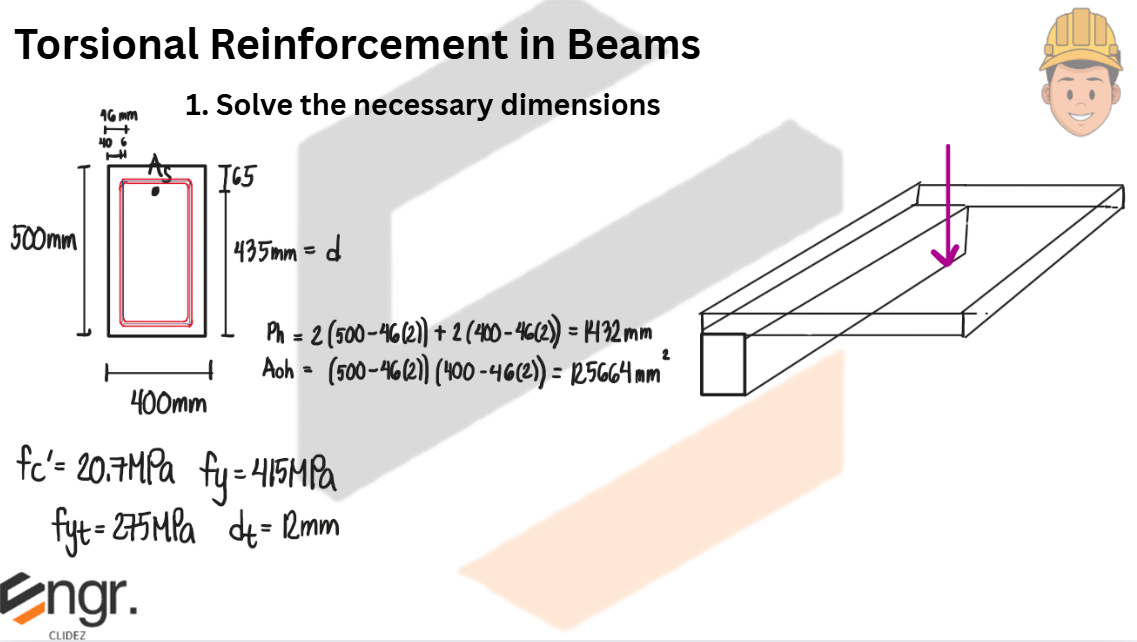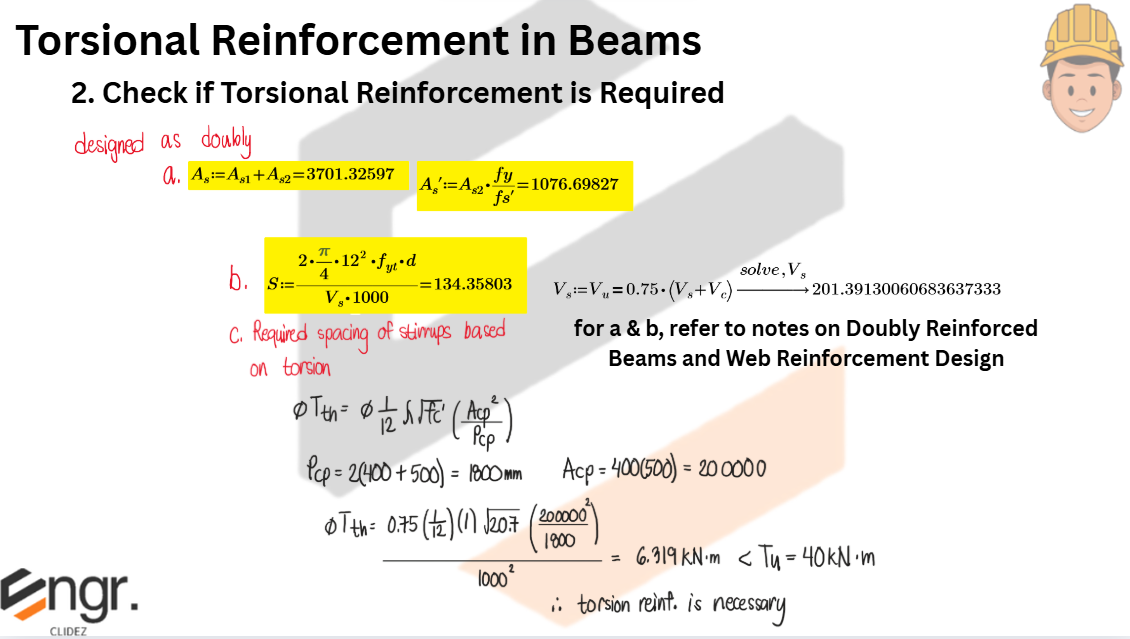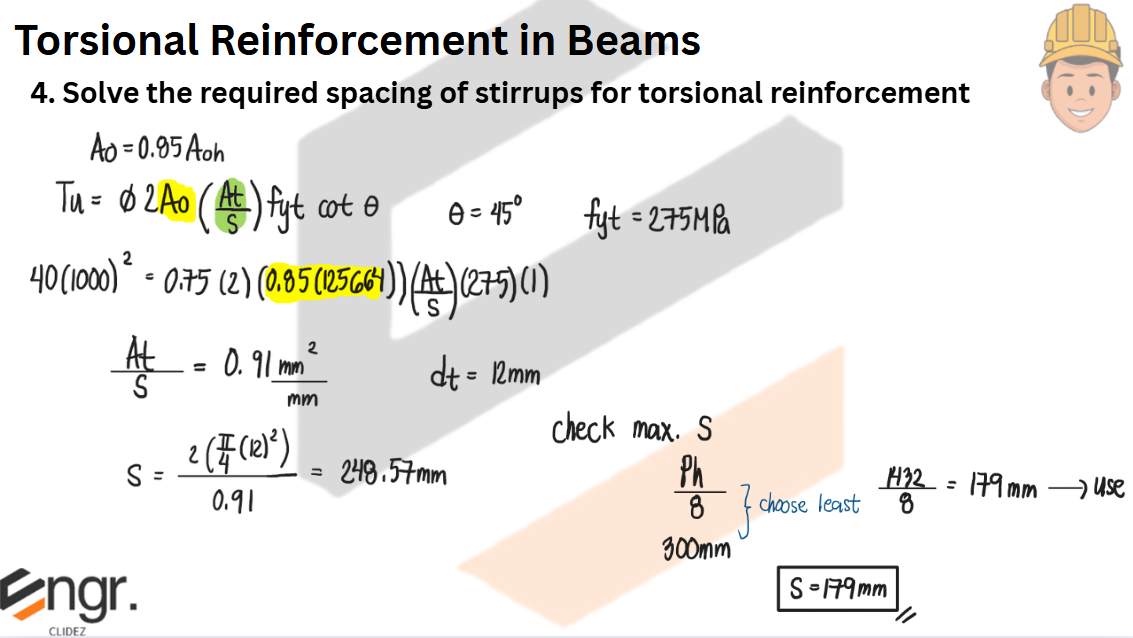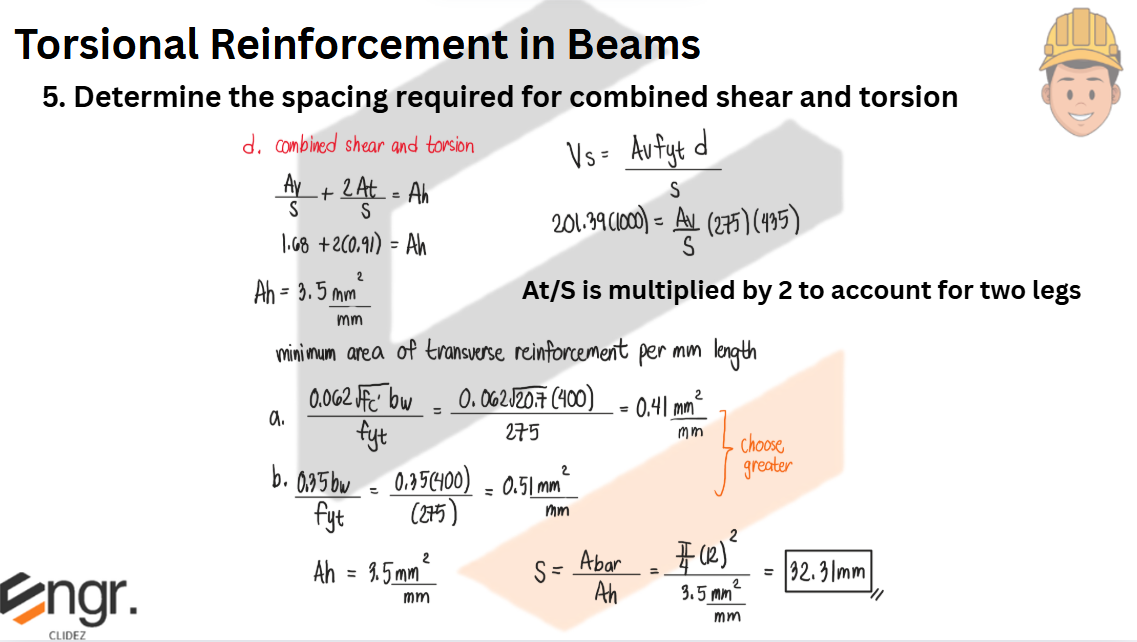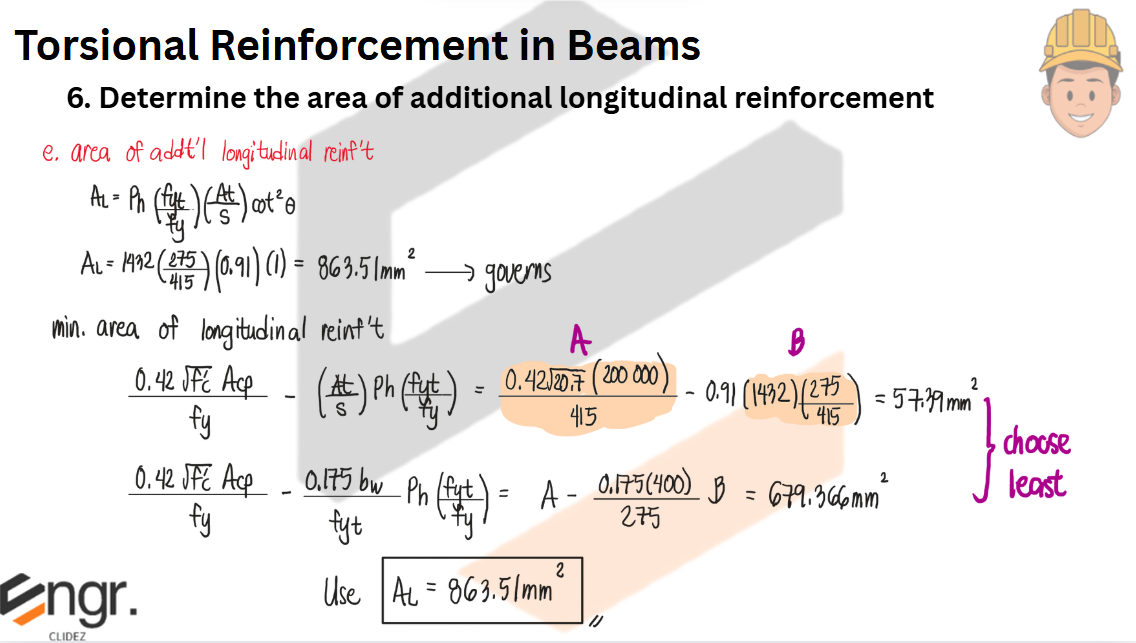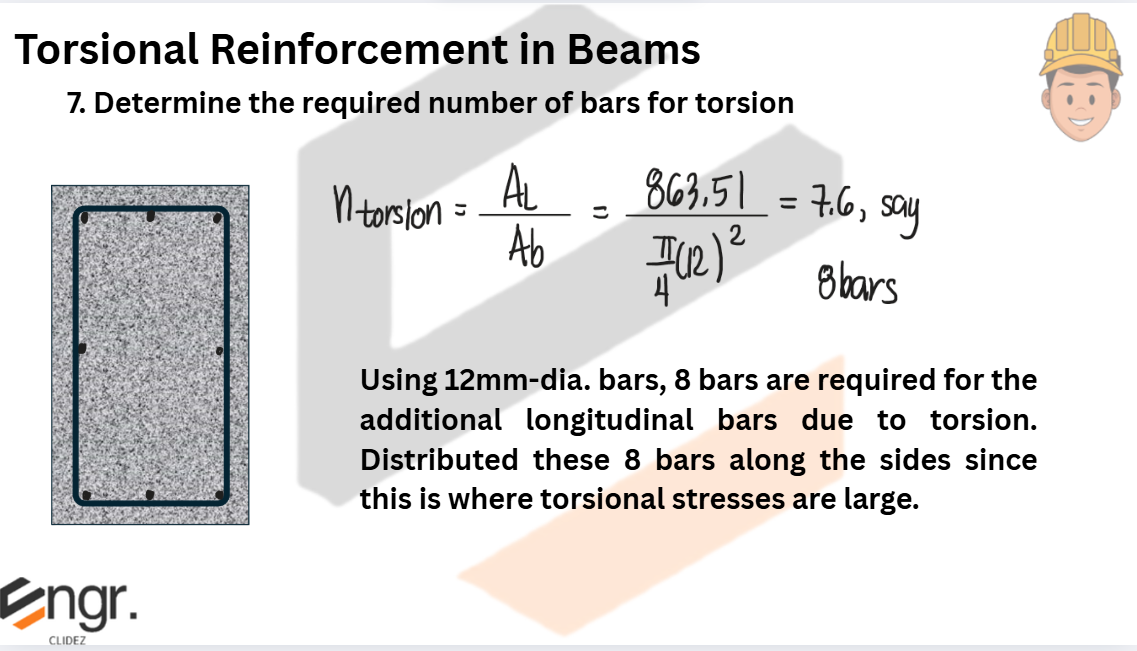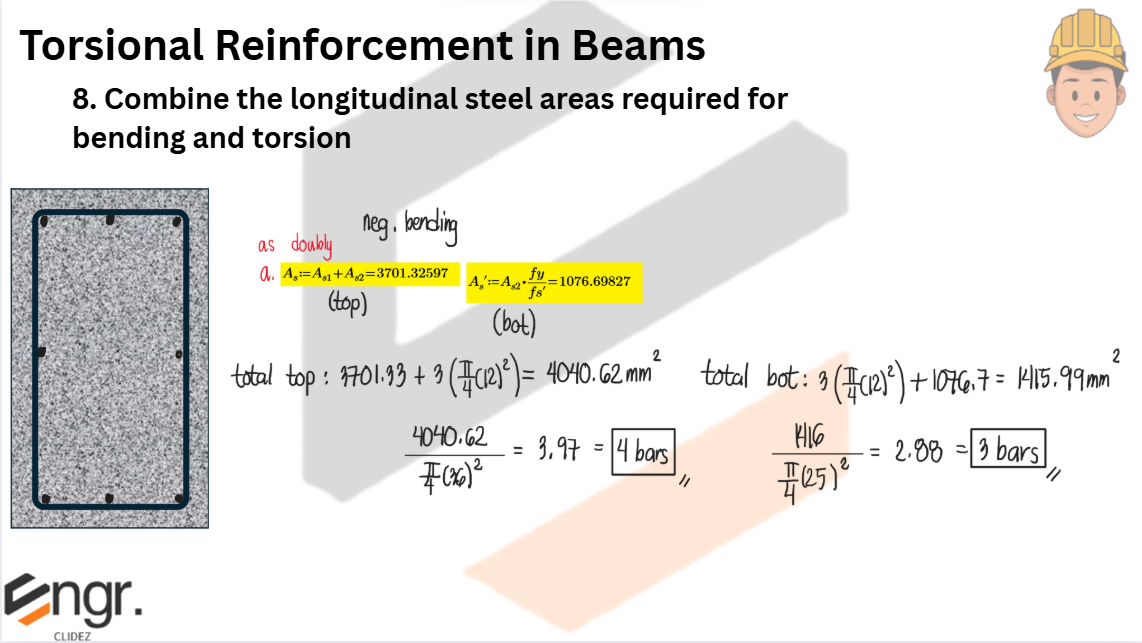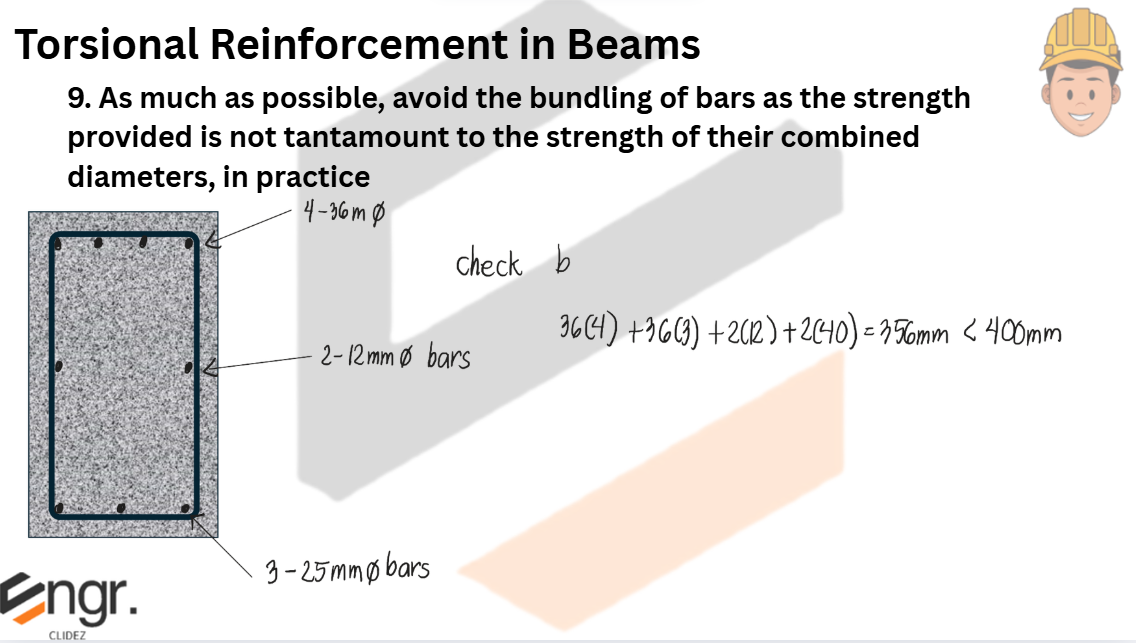Torsion is an often overlooked but critical aspect of beam design, especially in structures where irregular geometry, unsymmetrical loading, or compatibility requirements introduce twisting forces. Unlike flexural and shear stresses, torsional stresses act along the longitudinal axis of a beam, causing it to twist. If not properly accounted for, torsion can lead to cracking, serviceability issues, and even structural failure.
This guide explores the fundamentals of torsional reinforcement in beams, including when it is needed, how it is designed according to modern codes (such as ACI and NSCP), and practical construction details. Whether you're a student reviewing structural theory or a practicing engineer seeking clarification on detailing torsional stirrups and longitudinal bars, this page serves as a reliable resource to understand the role of reinforcement in resisting torsion.
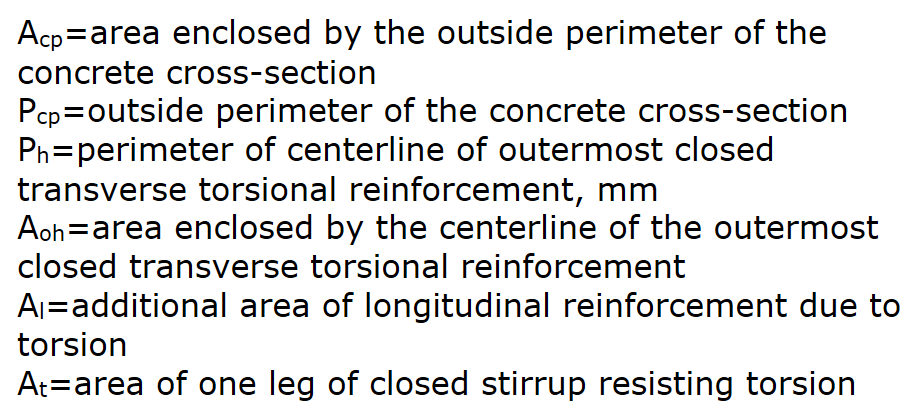
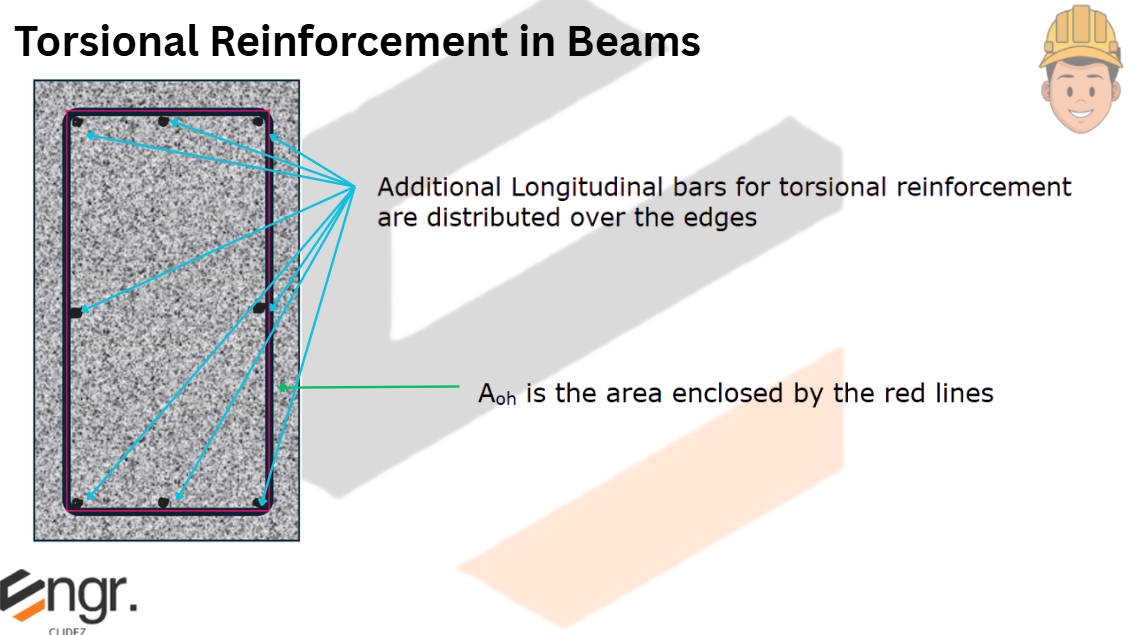







A reinforced concrete girder has a width of 400mm and an overall depth of 500mm. Concrete cover is 40mm. The centroid of longitudinal bars of the girder are placed 65mm from the extreme concrete fiber. Concrete strength f'c=20.7MPa and steel yield strength for longitudinal bars is fy=415MPa. Use 12mm U-stirrups with fyt=275MPa. The following factored forces are computed from this beam:
Factored Moment (negative), Mu=450kN-m
Factored Shear at Critical Section near the face of the support, Vu = 250kN
Factored Torsional Moment near the face of the support, Tu = 40kN-m
Determine the following using NSCP 2015:
a. The required longitudinal steel area based on moment.
b. The required spacing of stirrups based on shear.
c. The required spacing of stirrups based on torsion
d. The required spacing of stirrups based on combined shear and torsion.
e. The additional area of longitudinal reinforcement due to torsion.



See images:
